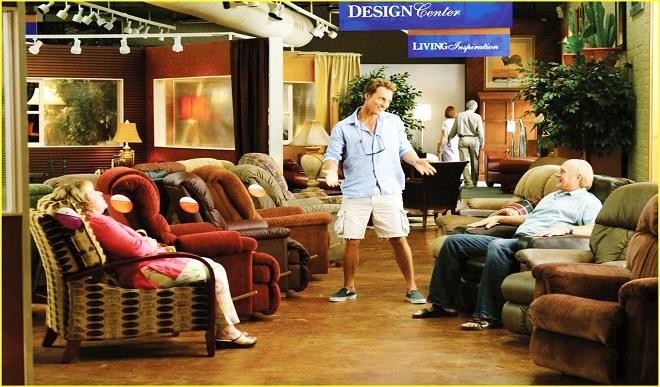Failure to Lunch
For 11 years, June Jo Lee, an ethnographer, has been travelling the country, talking to Americans about how they eat. She has often been in offices, observing white-collar workers. In one interview, a 20-something administrative assistant at an architecture firm in Seattle told her, “I don’t think I ate at a table at all this […]


For 11 years, June Jo Lee, an ethnographer, has been travelling the country, talking to Americans about how they eat. She has often been in offices, observing white-collar workers. In one interview, a 20-something administrative assistant at an architecture firm in Seattle told her, “I don’t think I ate at a table at all this week if you don’t include my desk at work.” In Chicago, Lee talked to an I.T. specialist who lunched in front of his computer and assiduously avoided the break room; anyone who ate in there was odd. Another guy said that each week he would bring in a crudité party platter from Costco and graze from it when he got hungry.
Schooled in anthropology, Lee works for the Hartman Group, a consulting firm. She helps clients like Kraft Foods, PepsiCo, Nestlé, Whole Foods Market and Google better understand how people think about and consume food so they can repackage products and design new ones, find novel distribution methods or keep their own employees productive and well fed. After all her conversations, note taking and analysis, Lee summarizes her findings like this: “The way people eat at work is pretty sad.”
In the 1987 movie “Wall Street,” Gordon Gekko famously remarks, “Lunch is for wimps.” It has proved to be a prescient line in the American workplace, where taking time off for lunch has increasingly become a sign of idleness. Breaking for a midday meal might have made more sense when labourers toiled with their bodies on tasks – building, planting, harvesting, manufacturing – that required rest and refuelling. But in an economy where the standard task is sitting in front of a computer, lunch is less intuitive and far more optional.
Now some 62 per cent of professionals say they typically eat lunch at their desks, a phenomenon that social scientists have begun calling “desktop dining.” Eating takes a back seat to meetings, catching up on to-dos or responding to email. Roughly half of American adults eat lunch alone. In research from the Hartman Group, many so-called millennial wage earners said they actually preferred eating solo. A quarter of those surveyed agreed with the statement “I eat alone to multitask better.”
There is a possible health benefit to all of this: Our unaccompanied lunches are probably smaller. Studies on pigs, rats, puppies, chickens, gerbils and other animals dating back to the 1920s show a phenomenon researchers call “social facilitation,” in which the presence of others makes an individual eat more. For years, scientists believed humans were different. Animals feed, they thought; humans dine. In subsequent research, it turned out that humans feed, too. Simply eating with one other person increases the average amount ingested by 44 percent. In fact, the more people present, the more people eat. One study showed that with seven or more, subjects ate 96 per cent more than they would have alone.
But with the clearly delineated lunch on the decline, workers end up snacking. In a study of 122 employees, people on average cached 476 calories’ worth of food in their desks. One person squirreled away 3,000 calories, including Cheetos, candy bars and five cans of pop-top tuna fish. In addition to the personal food stashes, there are those areas in an office where food accumulates like driftwood – the leftover sandwiches from a catered lunch; the remains of a birthday cake; banana bread someone baked at home; the bottomless candy dish. When researchers interviewed administrative staff members at the University of California, Davis, one respondent called these common stockpiles “food altars.”
Sometimes these collective food repositories become fraught, and in the case of shared workplace refrigerators, even hazardous. In a survey of more than 2,100 full-time professionals, nearly all had access to refrigerators. When asked about cleanliness, a full 40 percent were unaware of fridge cleaning or knew it to be rare or nonexistent. Navigating around a colleague’s forgotten bag of slimy baby carrots might be gross, but the bigger danger in a fridge is the bacterium Listeria monocytogenes. Unlike other pathogens like E. coli, listeria can thrive at 40 degrees Fahrenheit, the recommended temperature for refrigerators. Even in the Seattle law office of Bill Marler, the most prominent food-safety lawyer in the country, the fridge was, until recently, a mess of expired food, rotting salad and long-abandoned deli meat. “It’s embarrassing,” he told me. “Like an insurance salesman not having insurance.”
Beyond any health risks, the desk lunch detracts from our sense of the office as a collaborative, innovative, sociable space. It is hard to foster that feeling when workers eat single-serving yogurt alone, faces lit in the monochrome blue of their computer screens. Brian Wansink, a professor and the director of Cornell University’s Food and Brand Lab, points out that desktop dining isn’t even a sign of industriousness anymore; these days, a desk luncher is as likely as not to be scrolling through Facebook. Wansink and other researchers did a survey of fire-department captains and lieutenants in a major American city. They found significant positive correlations between work performance and eating and cooking as a team. Firehouses where firefighters ate together reported more cooperative behaviour; they were better at their jobs.
“Workplace satisfaction is so much higher if you eat with your colleagues,” Wansink told me. “You like your job more – and you like your colleagues better.”
Distributed by The New York Times
